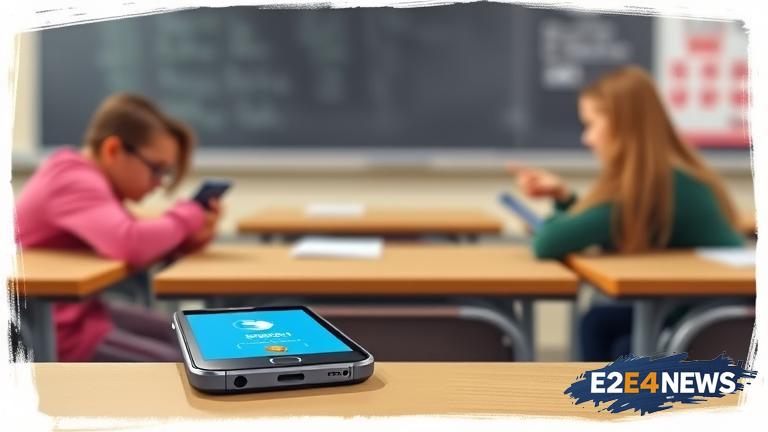The Beloit School District in Wisconsin is contemplating a ban on cell phones in classrooms, a move aimed at reducing distractions and enhancing student engagement. This consideration comes as part of a broader effort to improve academic performance and create a more conducive learning environment. The proposal, which has been met with mixed reactions from parents, students, and educators, highlights the challenges of balancing the educational benefits of technology with the potential for it to hinder learning. Proponents of the ban argue that the presence of cell phones in classrooms leads to decreased attention span, increased incidence of cyberbullying, and a general decline in the quality of face-to-face interactions among students. On the other hand, opponents suggest that cell phones can be valuable learning tools when used appropriately, facilitating access to educational resources, enhancing collaboration, and providing a means for students to stay organized. The district’s decision will likely be influenced by the outcomes of similar policies in other schools, which have reported mixed results. Some schools have seen improvements in student behavior and academic achievement following the implementation of cell phone bans, while others have encountered difficulties in enforcing such policies. The Beloit School District’s consideration of a cell phone ban also reflects a national conversation about the role of technology in education. As technology continues to evolve and play an increasingly significant role in daily life, educators are grappling with how to harness its potential while mitigating its drawbacks. The proposed ban has sparked a debate about the appropriate use of technology in educational settings and the measures that can be taken to ensure that it supports, rather than detracts from, the learning process. Parents and educators are weighing in on the issue, with some expressing concerns about the potential negative impacts of cell phones on mental health and social skills. Others are advocating for a more nuanced approach, one that involves educating students about responsible cell phone use rather than outright banning the devices. The decision the Beloit School District ultimately makes will have implications not only for its students but also for the broader community, as it navigates the complex interplay between technology, education, and societal values. In recent years, there has been a growing body of research on the effects of cell phone use on cognitive development, social relationships, and academic outcomes. This research has provided valuable insights into the potential benefits and drawbacks of cell phone use in educational settings, informing policymakers and educators as they consider how to regulate the use of these devices. The Beloit School District’s consideration of a cell phone ban is part of a larger trend towards reevaluating the place of technology in schools. As schools strive to prepare students for success in an increasingly digital world, they must also address the challenges posed by the ubiquity of technology. This includes finding ways to promote healthy technology use habits, protect students from the potential harms of excessive screen time, and ensure that technology serves to enhance, rather than replace, human interaction. The outcome of the Beloit School District’s deliberations will be closely watched, as it has the potential to influence policy decisions in other school districts facing similar challenges. Ultimately, the goal of any policy regarding cell phone use in schools should be to create an environment that is conducive to learning, fosters healthy relationships among students, and prepares young people for responsible technology use in their future careers and personal lives. By engaging in a thoughtful and inclusive discussion about the role of cell phones in classrooms, the Beloit School District can make an informed decision that supports the well-being and academic success of its students. The proposed cell phone ban has also raised questions about equity and access, as some students may rely on their cell phones as a primary means of accessing the internet or completing homework assignments. Therefore, any policy implemented must take into account the potential impact on disadvantaged students and ensure that alternative solutions are available to mitigate any negative effects. In conclusion, the Beloit School District’s consideration of a cell phone ban in classrooms reflects a complex set of issues surrounding technology use in education. As the district moves forward with its decision-making process, it will be essential to consider the diverse perspectives of stakeholders, including students, parents, educators, and the broader community. By doing so, the district can develop a policy that effectively addresses the challenges posed by cell phone use while also leveraging the potential of technology to enhance learning outcomes.
